
All LEARNZ field trips targeting primary and secondary schools are closely linked to the New Zealand curriculum, in particular science, social studies and geography. They can also be used by other subject teachers.
Key concepts
community involvement, cultural process, economy, environmental impacts, government, identity, infrastructure, land use, people and the environment, perspectives, sustainability, technological innovation, technology, transport, values, viewpoints
The New Zealand Curriculum - NZC
Key Competencies
LEARNZ virtual field trips contribute to the development of all five key competencies:
| Key competencies |
Examples of related field trip components |
| Thinking |
Constructing questions to put to experts during Audioconferences and via Ask-an-Expert. |
| Using language, symbols and texts |
Interpreting and making meaning of a variety of language and symbols in the Background Pages and throughout the web site. |
| Managing self |
Numerous content-related Activities provide students with chances to engage with the material and create their own interpretation of the content. |
| Relating to others |
Videos connect students with a range of expert opinions. Students listen actively when seeking answers to video questions. |
| Participating and contributing |
LEARNZ Virtual Field Trips are an ideal medium for group-based topic inquiry. They also enable students to transfer new learning into the context of their own communities where they are encouraged to take action. |
(See page 12-13 NZC 2007)
Values
The Smart Motorways field trip encourages, models and explores these values:
- innovation, inquiry and curiosity
- ecological sustainability
- community and participation
(see page 10 NZC 2007).
E-learning and pedagogy
The Smart Motorways field trip directly involves learning that is supported by information and communication technology (ICT).
In particular, the trip will:
- Assist the making of connections by enabling students to enter and explore new learning environments, overcoming barriers of distance and time.
- Facilitate shared learning by enabling students to join or create communities of learners that extend well beyond the classroom.
- Enhance opportunities to learn by offering students virtual experiences and tools that save them time, allowing them to take their learning further (Page 36 NZC 2007).
Technology
| |
|
|
|
| Strand |
Achievement aims |
Key questions |
Related background pages |
|
Technological Practice
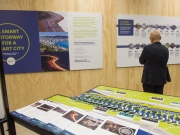
|
Planning for practice
- L 3: Undertake planning to identify the key stages and resources required to develop an outcome. Revisit planning to include reviews of progress and identify implications for subsequent decision making.
Brief development
- L 3: Describe the nature of an intended outcome, explaining how it addresses the need or opportunity. Describe the key attributes that enable development and evaluation of an outcome.
|
- What are the key stages and resources required to turn the existing motorway into a smart motorway?
- How do technologists plan and keep track of a project like this?
- What are reviews of progress and why are they an important part of all technological practice?
- What is the challenge that this project aims to address?
- What are the key attributes of the technological outcome (‘the project’)?
- How will this outcome be evaluated in terms of its fitness for purpose?
|
- A Smarter Motorway
- Key Technology Questions
|
|
Technological Knowledge
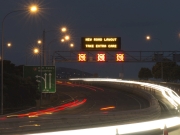
|
Technological modelling
- L 3: Understand that different forms of functional modelling are used to inform decision making in the development of technological possibilities and that prototypes can be used to evaluate the fitness of technological outcomes for further development.
Technological systems
- L 4: Understand how technological systems employ control to allow for the transformation of inputs to outputs.
|
- What kinds of functional modelling were used in the design phases of this project?
- How has this functional modelling contributed to the decision making process?
- How can roading be considered a ‘technological system’? [‘A technological system is a set of interconnected components that has been designed to fulfil a particular function without further human design input’]
- In the case of a smart motorway, what are the inputs, outputs, transformations and controls?
|
- What is a Smart Motorway
- Features of a Smart Motorway
- The Hub of the Smart Motorway
- Key Technology Questions
|
|
Nature of Technology
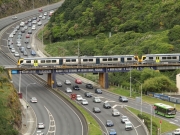
|
Characteristics of Technology
- L 3: Understand how society and environments impact on and are influenced by technology in historical and contemporary contexts and that technological knowledge is validated by successful function.
- L 3: Understand that technological outcomes are recognisable as fit for purpose by the relationship between their physical and functional natures.
|
- How are smart motorways a response to societal developments?
- How might smart motorways influence society?
- Why is it only now (not in the past) that smart motorways are being developed?
- How will this ‘first in New Zealand’ smart motorway influence future roading projects?
- What is the ‘physical’ nature of a smart motorway?
- What is the ‘functional’ nature of a smart motorway?
- How will we know if this first ‘smart motorway’ is fit for purpose?
|
- A Smarter Motorway
- What is a Smart Motorway
- Features of a Smart Motorway
- Key Technology Questions
|
Social Science
| |
|
|
| Strand |
Achievement Aims |
Related background pages |
|
Social Studies
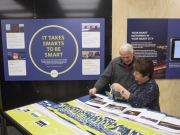
|
Continuity and Change
- Level 2: Understand how time and change affect peoples' lives
- Level 4: Understand that events have causes and effects
Place and Environment
- Level 2 Understand how places influence people and people influence places
- Level 3 Understand how people view and use places differently
- Level 5 Understand how people's management of resources impacts on environmental and social sustainability
Identity, Culture, and Organisation
- Level 4: Understand how formal and informal groups make decisions that impact on communities
Understand how people participate individually and collectively in response to community challenges
- Level 5: Understand how systems of government in New Zealand operate and affect people's lives, and how they compare with another system
|
- New Zealand Roads
- Benefits of a Smart Motorway
- The Hub of the Smart Motorway
|
English
The selected processes and strategies indicators used in the table below are from Level three of the NZC, but aim to cover indicators from levels two to four.
| |
|
|
| Strand |
Processes and strategies indicators |
Example of related field trip component |
|
Speaking, Writing and Presenting
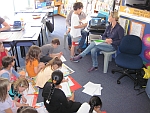
|
- uses an increasing understanding of the connections between oral, written, and visual language when creating texts
- creates a range of texts by integrating sources of information and processing strategies with increasing confidence
|
- making the connection between Audioconferences, Background Pages, Videos, and own discussion when generating written responses
- assimilate information from Audioconferences, Background Pages, Videos, and Ask-an-Expert to create a range of texts
|
|
Listening, Reading and Viewing
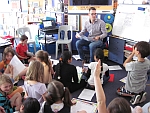
|
- selects and reads for enjoyment and personal fulfilment
- recognises connections between oral, written, and visual language
- integrates sources of information and prior knowledge confidently to make sense of increasingly varied and complex texts
- thinks critically about texts with increasing understanding and confidence
|
- printed copies of Background Pages could be part of classroom library
- making links between Audioconferences, Background Pages, and Videos
- Audioconferences, Audioconference Backchannel, Videos, Diaries, and Ask-an-Expert can be used to make sense of Background Pages and Diaries and generate questions to put to experts for further clarification
|











